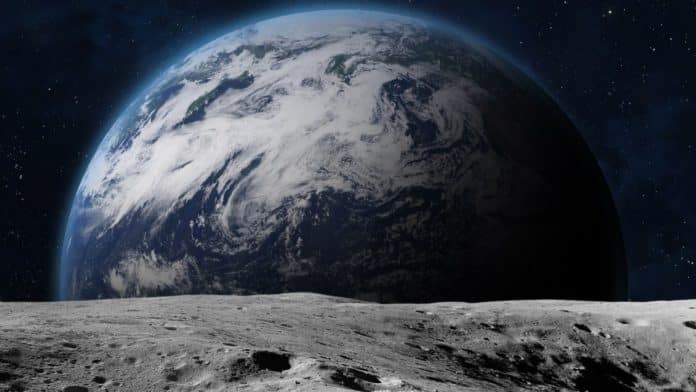The origin of volatiles in the Moon’s interior is debated. Scenarios range from inheritance through a Moon-forming disk or “synestia” too late accretion by meteorites or comets. Noble gases are excellent tracers of volatile origins.
Over nearly five centuries, researchers put forward numerous, much-debated theories on how the Moon was formed. Now, geochemists, cosmochemists, and petrologists at ETH Zurich shed new light on the Moon’s origin story.
In a new study, scientists show that the Moon inherited the indigenous noble gases of helium and neon from Earth’s mantle.
Scientists analyzed six samples of lunar meteorites from an Antarctic collection obtained from NASA. The meteorites are made of basalt rock, created when magma welled up from the Moon’s interior and soon cooled. After they formed, fresh layers of basalt continued to cover them, shielding the rock from cosmic rays and, particularly, the solar wind.
Lunar glass particles were created during the cooling process together with other magma-found minerals. Scientists found that the glass particles still have helium and neon chemical fingerprints (isotopic signatures) from the Moon’s interior. Their results prove that the Moon inherited the Earth’s native noble gases.
Cosmochemist Patrizia Will, formerly of ETH Zurich in Switzerland, now at Washington University in St. Louis, said, “Finding solar gases, for the first time, in basaltic materials from the Moon that are unrelated to any exposure on the lunar surface was such an exciting result.”
Asteroids constantly attack the Moon’s surface because it lacks an atmosphere. The meteorites were presumably ejected from the middle strata of the lava flow, which was similar to the huge plains known as the Lunar Mare, by a high-energy impact. The rock shards eventually arrived on Earth in the form of meteorites. In this case, the “cold desert” of Antarctica, where they are easier to see in the landscape, many of these meteorite samples are found in the deserts of North Africa.
Using the Tom Dooley instrument at ETH Zurich, scientists measured sub-millimeter glass particles from the meteorites and ruled out the solar wind as the source of the detected gases. The helium and neon they detected were much more abundant than expected.
ETH Zurich Professor Henner Busemann, one of the world’s leading scientists in extra-terrestrial noble gas geochemistry, said, “Knowing where to look inside NASA’s vast collection of some 70,000 approved meteorites represents a major step forward. I am strongly convinced there will be a race to study heavy noble gases and isotopes in meteoritic materials.”
“Soon, scientists will look for noble gases such as xenon and krypton, which are more challenging to identify. They will also search for other volatile elements such as hydrogen or halogens in the lunar meteorites.”
“While such gases are not necessary for life, it would be interesting to know how some of these noble gases survived the brutal and violent formation of the Moon. Such knowledge might help scientists in geochemistry and geophysics to create new models that generally show how such most volatile elements can survive planet formation in our solar system and beyond.”
Journal Reference:
- Will, P., Busemann, H., Riebe, M., Maden, C.: Indigenous noble gases in the Moon’s interior, Science Advances, 10 August 2022. DOI: 10.1126/sciadv.abl4920
